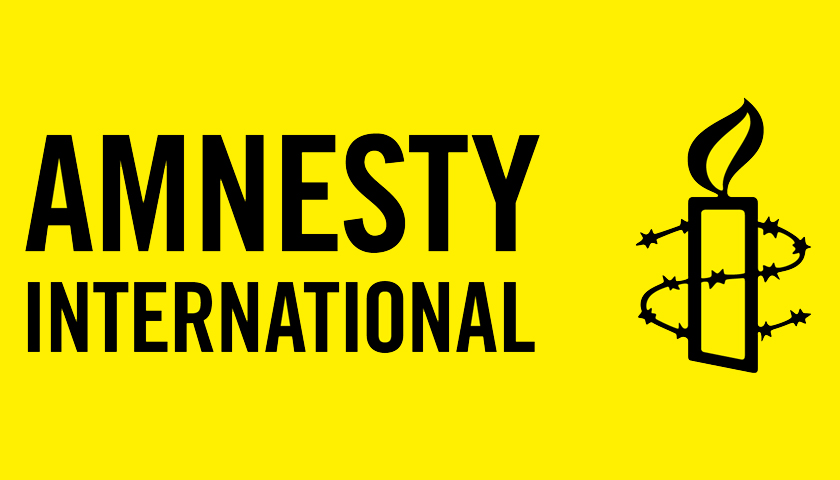Ahead of COP27, as the world hurtles towards global warming levels of at least 2.5°C, Amnesty International is urging all governments party to the UN Framework on Climate Change to update their 2030 emissions targets to ensure they are aligned with keeping the average global temperature increase below 1.5°C, commit to rapidly phasing out the use and production of fossil fuels without relying on harmful and unproven ‘shortcuts’ like carbon removal mechanisms and wealthy countries must establish a loss and damage fund for those whose rights have been violated by the climate crisis.
Agnès Callamard, Amnesty International’s Secretary General, said:
“COP27 comes in the wake of a terrifying summer in which the Arctic burned, scorching heatwaves ravaged Europe, and floods submerged huge swathes of Pakistan and Australia. In short, the climate crisis is already upon us – yet most governments have chosen to remain in the deadly embrace of the fossil fuel industry, submitting desperately inadequate emissions targets and then failing to meet even those.
“These failures mean we are currently heading for global warming exceeding 2.5°C, a scenario which would see famine, homelessness, disease, and displacement unfold on an almost unfathomable scale. These violations are already happening in many parts of the world.
“As the climate crisis unfolds, the people who are least responsible for causing it are being hit hardest and first, exacerbating the marginalisation they already face. At COP27 we need to see measures that will radically shift responsibility-sharing and address this injustice. Wealthy governments must increase their commitments on climate finance to help lower-income countries phase out fossil fuels and scale up adaptation measures. They must also establish a loss and damage fund in order to provide speedy remedy to those whose rights have been violated by the crisis they helped to create.”
“I’m getting poorer every day”
Amnesty’s new briefing Any tidal wave could drown us – Stories from the climate crisis, includes case studies featuring seven marginalised communities from around the world, including in Bangladesh, Fiji, Senegal, and the Russian Arctic.
Amnesty worked with local activists to interview marginalised people, including those living in some of the world’s most climate-vulnerable places, and shared their stories and calls to action. Their accounts provide a glimpse of life on the frontlines of the climate crisis, characterised by discrimination, forced displacement, loss of livelihood, food insecurity, and destruction of cultural heritage.
In Bangladesh, interviewees from impoverished and marginalised coastal communities, including Dalits and Indigenous Munda people, explained how frequent flooding means they have had to rebuild their houses repeatedly, or else live in the ruins of their flooded homes. Living in poverty, some of these communities are subject to pervasive and systematic discrimination, and as a result they are extremely vulnerable to climate shocks. Floods have also damaged water and sanitation infrastructure, leaving them with salty drinking water and unusable toilets.
The Indigenous peoples of the Arctic region of Yakutia live in the far north-east of Russia, where the average temperature has risen by 2-3°C in recent years. This has caused permafrost to thaw, intensifying wildfires, which is leading to biodiversity loss. The impacts of climate change in Yakutia are compounded by the Russian government’s plans to maximise extraction and production of oil and gas in the region.
Unpredictable weather has a severe impact on Indigenous peoples’ way of life, as one Chukcha man explained:
“The weather is essential for the traditional way of life of Indigenous peoples. Based on weather patterns, we determine where the reindeer will graze, where to set up a camp between migrations, when the snowstorm will come, when and where animals, birds and fish will migrate.”
In Québec, Canada, the Indigenous Innu people in the community of Pessamit face similar threats. Rising temperatures have led to reduced coastal ice and other weather changes which have severely impacted the community’s way of life. For example, the fact that lakes do not freeze in winter means elders are less able to travel on their ancestral territory and cannot pass on their traditional knowledge about wayfaring.
“If you are no longer able to talk about your knowledge, there is a certain shame. You lose some dignity,” David Toro, environmental adviser at Mamuitun Tribal Council, said.
The Pessamit community is also living with the impacts of hydroelectric dams located in their ancestral territory, while the forestry industry has stripped their land of trees. One Pessamit Elder said “Those who made the dams, they install them but they don’t pay attention. There are fish in the rivers, but they don’t care. There are animals, they don’t care. Even if it floods the land, they don’t care about humans, let alone animals.”
The case studies below also reveal how people facing loss and damage due to climate change are often left to fend for themselves after disasters, forcing them to take out exorbitant loans, migrate, cut down on food, or pull their children out of school.
“I used to be able to send my son to school… but now I don’t have that luxury, I’m getting poorer every day,” a fisherman who lives in the Fonseca Gulf area of Honduras, which suffers regular flooding and cyclones, said.
Not listened to, not taken seriously
Some interviewees shared information about adaptation strategies they have developed. These provide important learnings for the rest of the world and underscore the importance of including the worst-impacted communities in developing strategies to address the climate emergency. For example, the Pessamit Indigenous community in Québec, Canada, have initiated projects to protect salmon and caribou.
“For the past ten or twelve years, community or even individual hunting of the caribou has been prohibited,” Adelard Benjamin, project coordinator for Territory and Resources in Pessamit, said.
The resourcefulness of the hardest-hit communities underscores the importance of genuinely including them in decision-making concerning responses to the climate emergency. For the Pessamit people, the impacts of climate change and environmental degradation have entrenched inequalities caused by long histories of colonialism, racism and discrimination.
As Eric Kanapé, environmental adviser for the Pessamit community said: “We are consulted for the sake of it. We propose new ways of doing things but we are not listened to. We are not taken seriously.”
The Langue de Barbarie is a sand peninsula near the Senegalese city of Saint Louis, where around 80,000 people live in densely populated fishing villages at high risk of flooding. Coastal erosion has led to the loss of up to 5-6 meters of beach every year; “the sea is advancing”, as one fisherman put it.
Interviewees in Saint Louis have developed several of their own initiatives to cope with the climate crisis. For example, one community-led project helps locals affected by sea-level rise to build houses and set up income-generating recycling activities. Others have set up a community solidarity fund to help people through times of hardship, although it is sometimes left empty because of economic problems affecting the whole community.
The lack of support measures and effective remedies for loss and damage caused by climate change is a major injustice. The wealthy countries that have contributed the most to climate change, and those with the most resources, are particularly obliged to provide redress. At COP27, this should start with an agreement to establish a loss and damage fund and commitments of adequate funds dedicated for this purpose.
Last chance
Amnesty will be attending COP27 in Sharm El-Sheikh, Egypt, from 5-19 November. The organisation is calling on all governments to urgently ensure their 2030 emissions targets are compatible with keeping the global temperature rise below 1.5°C.
Meeting the 1.5°C target would mitigate some of the worst impacts of climate change, but the window to do this is rapidly closing. Despite the COP26 Glasgow Climate Pact Decision calling on all states to strengthen their 2030 targets, only 22 countries submitted updated pledges this year. In addition, most national policies currently being implemented are inadequate to meet countries’ pledges.
Wealthy states must present a clear plan to increase their climate finance contributions, so they can collectively meet the long overdue goal of raising at least US$100billion annually to help lower-income countries phase out fossil fuels and scale up adaptation measures. Wealthy countries must provide rapid new funding to support communities that have suffered serious loss and damage caused by the effects of climate change and enable them to thrive.
Civil society participation in COP27 is severely threatened by the Egyptian authorities’ years-long crackdown on the rights to freedom of expression, association, and peaceful assembly which Amnesty has been documenting. All governments attending COP27 must pressure the Egyptian government to protect civic space and guarantee NGOs’ and Indigenous peoples’ meaningful contribution.
More evidence from the frontline
Austria and Switzerland
In 2022, Europe experienced its hottest summer on record, with multiple heatwaves, record-breaking temperatures, drought, and wildfires in several countries. Amnesty interviewed people in Austria experiencing homelessness, and older people and people with disabilities in Austria and Switzerland, who were all badly impacted by the extreme heat.
Fiji
Amnesty spoke to residents of a safe house – many of whom were LGBT – in an informal settlement in Fiji, one of the most climate-vulnerable countries in the world. Fiji has experienced rising sea and air temperatures, more intense tropical cyclones, storm surges, droughts, and changing rainfall patterns as a result of climate change. Residents reported struggling to access sufficient food immediately after cyclones and having to evacuate several times in recent years as the shelter got damaged by several cyclones. They also explained how people of diverse sexual orientation and gender identity may bear the brunt of public anger or administrative disruption in the context of disasters, including community and police harassment, as a consequence of stigma and discrimination.
Honduras
Communities in the Fonseca Gulf area of Honduras rely on subsistence fishing and are highly vulnerable to climate shocks. Extreme weather events and the reduction in fish species have caused a drastic drop in people’s living standards and caused deepening poverty. Residents described how they are often reduced to cutting mangrove to sell as timber or firewood, contributing to the further degradation of their environment.
One fisherman in Cedeño village said: “You have no idea what the mangroves used to be like, it was a pleasure to see and appreciate them. Today you can no longer see them, they have been destroyed, it is a desert over the water.”
Senegal
The Langue de Barbarie is a peninsula in Senegal where 80,000 people live in densely populated fishing villages. It is one of the most climate vulnerable places on the African continent, exposed to sea-level rise and experiencing frequent flooding and storm surges.
People described how these weather events had damaged fisheries and left them with no means of making a living – but the prospect of moving is devastating for some:
“We’re thinking of moving, but we don’t really want to, because if you want to kill a fisherman, you have to take him away from the sea,” said one local fisherman.


